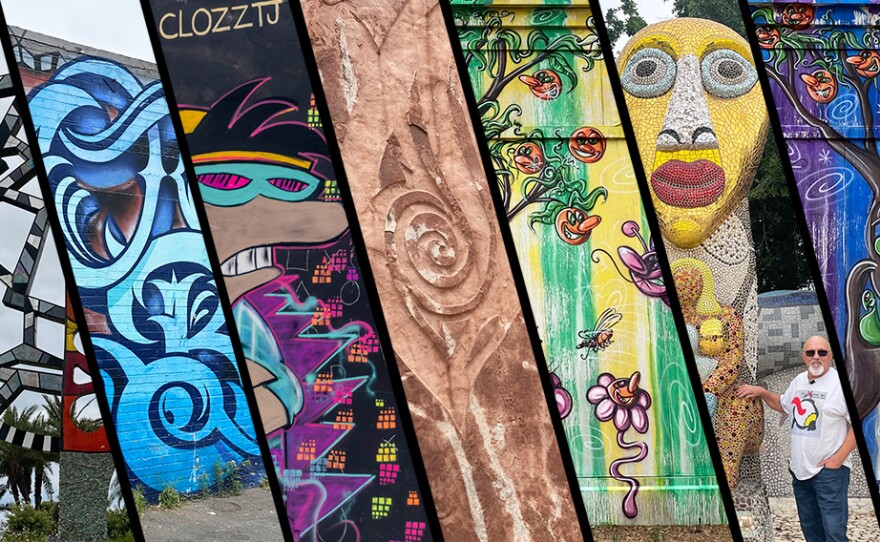A painted collage of history nearly lost to time and humble silence covers a wall in Lemon Grove.
The building it adorns now sits empty. The old store used to sell vintage clothing and local art. In the back, people assisted immigrants recently released from detention centers, “who are essentially dumped on the streets with no resources,” said Mario Chacon, the artist who painted the mural.
It’s a fitting location for the publicly-funded mural that depicts the first successful school desegregation case in the U.S. It happened in 1931, 23 years before Brown vs. Board of Education.

Along the top stretches a depiction of The Lemon Grove Incident, when the Lemon Grove School Board tried to send Mexican American students to separate classes in a building that used to be a barn.
School board members concocted false reasons: The Mexican children brought diseases. They don’t speak the language. They’re not assimilated.
Instead of obeying and walking to the old barn, the children went home and told their parents.
The parents organized El Comité de Vecinos — the neighborhood association. They went to the Mexican consulate and obtained support for lawyers.
“We're talking the early 30s,” Chacon said. “A period of intense anti-immigrant, anti-Mexican racism.”
In the 1930s, the majority of Mexican children in California — many of them citizens — were placed in “Americanization schools” to learn English and “American customs.”
“And families still had the self-dignity to stand up to this,” Chacon said. “They knew right from wrong. They knew that their children deserve to be in the school with the other children. They were taxpayers. Many of them were citizens.”
The school board may not have bargained for just how united the Mexican community would be in their fight back.
In one panel on the mural, a lawyer towers, one hand on his hip and the other jutting at a small child on the witness stand. That child is Robert Alvarez Sr., the lead plaintiff.
His son, Roberto Alvarez Jr., said their migration from Baja and intermarriages created a very interconnected, empowered community. In fact, he said, the agricultural workers of Lemon Grove would go on to form one of the first labor unions in Southern California, long before the United Farm Workers.
Alongside his father in the mural are painted another classmate — who later became his mother — and his uncle and grandparents.

Together with the community and what Alvarez Jr. called “a horde of cousins,” they fought what he called “José Crow.”
They won the case, which helped establish the legal basis for arguments in Brown vs. Board of Education. But it’s much less known than that case. Alvarez Jr. himself didn’t hear about it until he was doing doctoral anthropology research at Stanford.
He planned to do his dissertation in Panama, but the 1970s academic literature on immigrants was disturbing him. It painted them as all the same.
“As being helpless, being pawned, being pushed into certain places. And I knew that our experience was very different,” he said. “That we had a lot of grit and that we were active as individuals.”
He wanted to offer another view. He started interviewing his elder family members.
They kept referencing “the school thing.” Alvarez Jr. began to wonder what exactly “the school thing" was.
His father just said it was a case that happened when he was a kid, and pointed him to a box of documents his grandmother saved.
It was an anthropologist’s dream: a treasure trove of newspaper clippings and school board meeting minutes documenting the case.
The community had never spoken about it, Alvarez Jr. said.
His father said his grandmother used to say, “Don’t be all loud about it. Just be humble and be thankful that we won this case and let’s just go back to being who we were.”
Alvarez Jr. published his dissertation and many papers about it. But he’s humble about that, too. He said people don’t read academic papers. They get lost.
But the mural is here to stay, where everyone can see it.
Underneath the images of struggle and victory, a child scrawled the words: “Thank you great grandpa for our rights. We are all equal.”








